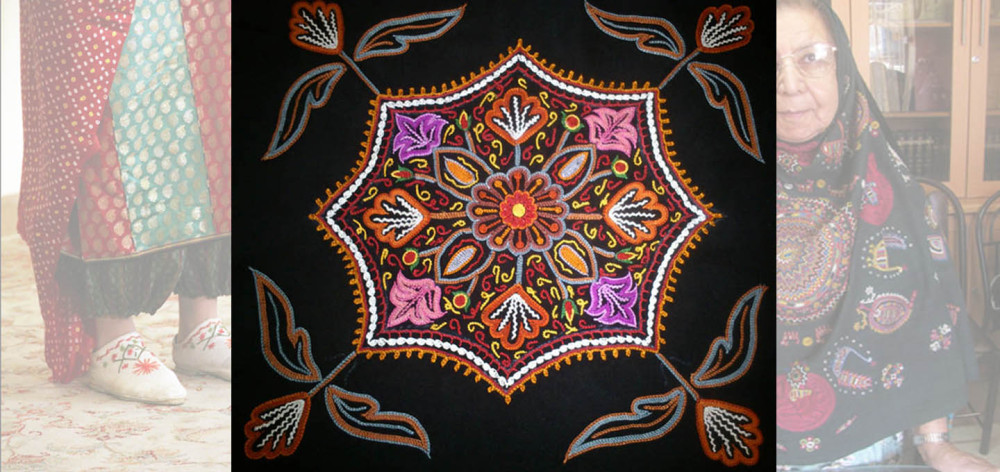
Gabr Douzi or Zartoshti Douzi of Yazd
Traditional embroidery of Iran is one of the oldest decorations of clothing and textiles that were and still are involved with daily life. These handicrafts were both ornate and representative of the identity and the culture of their makers. In addition, they appeared on the clothing as religious symbols. Before the Islamic Era, they were also used as talismans. Traditional embroidery continued after the Islamic Era in Iran. Even though they went under dramatic changes in terms of motifs, they did not lose that Persian character specific to them.
Nowadays, there are at least forty-two fields of embroidery of which one of the oldest is “Zartoshti Douzi” or sewing Zartoshti (literally meaning “related to Zoroaster”). It is clear that this kind of embroidery is related to the culture of Zoroastrianism. In the worldview of Zoroastrianism nature, that is the creation of God, is highly respected, and a true human being is someone who protects the creations of god. That is one of the reason there are many motifs in Zartoshti that are inspired by the nature.
In the past, the Zoroastrians were very fond of delicate weavings and thought very high of embroidery. So that a young girl’s high skill in embroidery was considered a part of her dowry. A Zartoshti consists of special motifs and symbols. They could also be sewed on bridal dresses and were representative of fertility, productivity and eternal life. After the Islamic era, like many other folk people, Zoroastrians kept their traditional clothing.
Until recent years many brides wore their traditional bridal dress at their weddings. The yarn of Zartoshti embroidery is natural spun silk. Many kinds of methods are used such as satin stitch, blanket stitch, back stitch and etc. Some of the motifs of Zartoshti, that are inspired from nature, are Tree of Life, Cypress, Bent Cypress, Pink blossom, “Shiluneh” of a four or eight petal flower, and motifs of animals like peacock, rooster, hen, chicken, hoopoes, “Howz” or small pools, fish and geometric forms such as circle or square. The motifs are completely simple and abstract and are sewed both regularly and irregularly. In the past, the Zartoshti were sewed using only bright colors. Zoroastrians detested dark colors in the belief that where there are no colors there is darkness. However this beliefs have been weakened and now Zartoshti are sewed using all the colors including black.